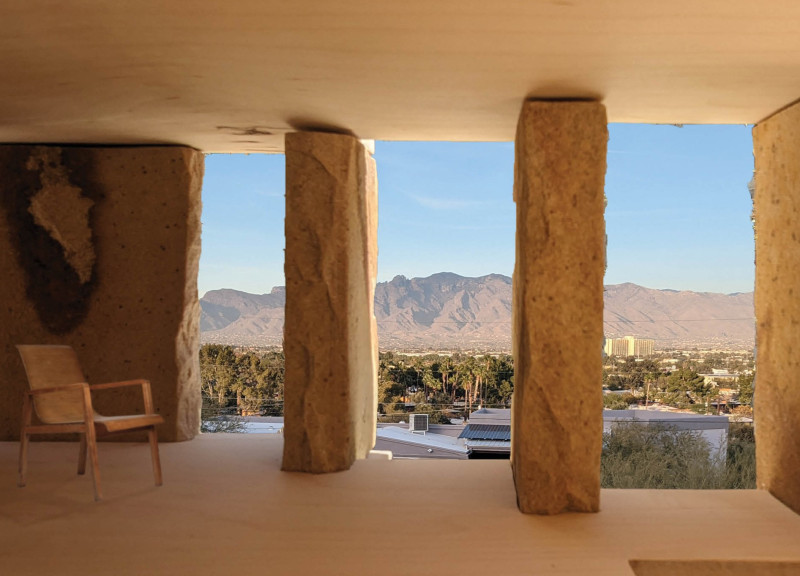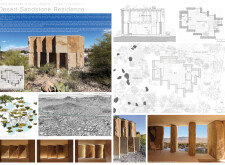5 key facts about this project
### Project Overview
The Desert Sandstone Residence, located in the Sonoran Desert near the Tucson Mountains, is a proposed design for the 2024 Builder Unbuilt Award in the <100m² category. This residence focuses on creating living spaces that harmonize with the local landscape, utilizing materials sourced from the immediate environment, including Coconino Sandstone. The design reflects a commitment to sustainable practices, integrating innovative strategies for ecological sensitivity throughout.
### Material Selection and Performance
The choice of materials is central to the project’s sustainable design ethos. Coconino Sandstone provides durability and effective thermal regulation, essential for the desert's fluctuating temperatures. Concrete is employed for structural foundations and rainwater cisterns, offering stability and facilitating efficient water management. The incorporation of glass enhances views while carefully controlling thermal loads within the residence, contributing to overall energy efficiency.
### Water Management and Environmental Integration
An integrated water management system features rain gardens designed to collect and reuse water, supporting both aesthetic landscaping and sustainable resource use. The strategic design of thick sandstone walls enhances indoor climate control, reducing reliance on mechanical heating and cooling systems. Thoughtful placement of windows ensures ample natural light while minimizing heat gain, fostering an energy-efficient living environment. The overall design establishes a connection with the surrounding natural landscape, promoting a sense of tranquility and environmental awareness among residents.



















































